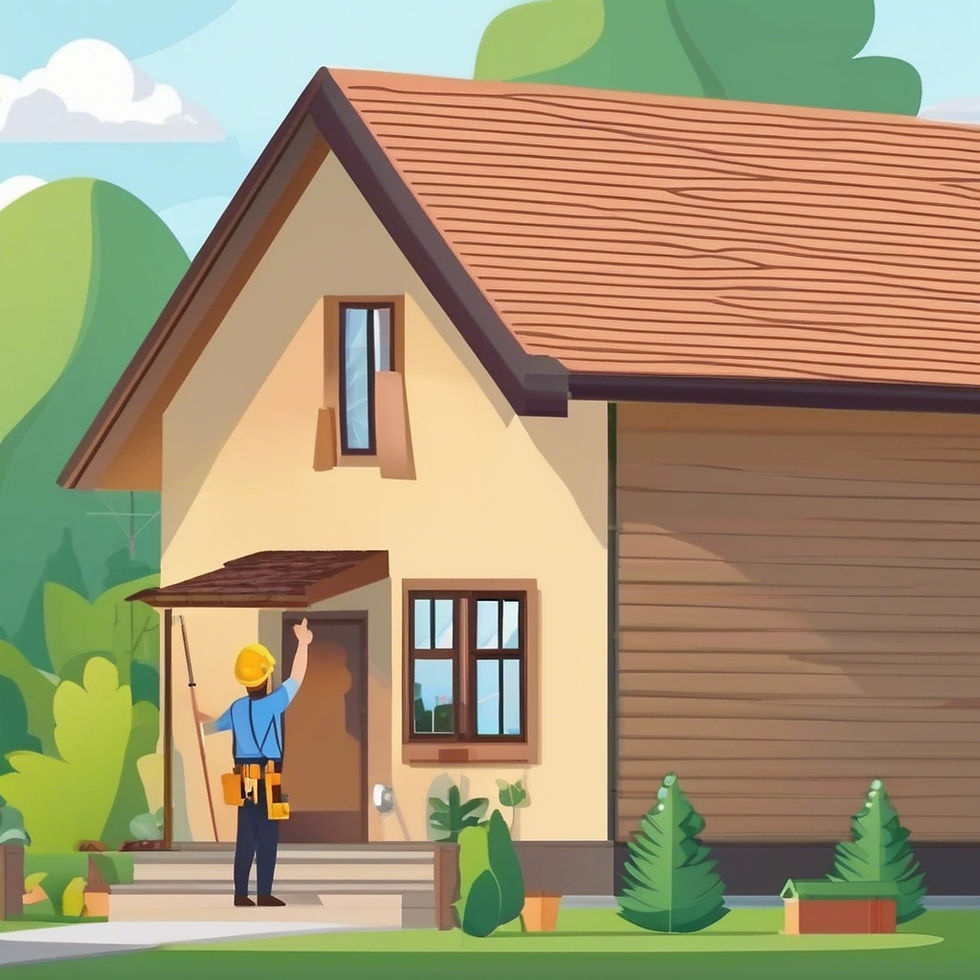How Weather Affects Your Roof and When You Should Repair It
- David Mitchell
- Jun 19
- 3 min read
The roof is your home’s first line of defence against the elements, but constant exposure to the British weather takes its toll. From heavy rain and snow to high winds and scorching summer heat, the UK climate can cause serious wear and tear—making timely roof repairs essential.
Whether you’ve had a new roof installed recently or your current one is several years old, understanding how weather impacts your roof can help you know when to act. In this guide, we’ll break down the effects of weather on roofing and explain when you should call in professional roofers or a trusted roofing contractor.
Why Weather Damage Shouldn’t Be Ignored
Weather-related damage to a roof often starts small—loose tiles, cracked flashing, or blocked gutters. Left unchecked, these minor issues can escalate into bigger problems such as leaks, insulation damage, and even structural decay.
Delaying repairs can also lead to:
Increased costs in the long run
Water damage to interior walls and ceilings
Higher heating bills due to poor insulation
Complete roofing installation much earlier than necessary
🌦️ How Different Weather Conditions Affect Your Roof
1. Rain and Damp Conditions
The UK’s wet climate means roofs face near-constant moisture. Rainwater can:
Seep through cracked tiles or broken flashing
Accumulate in blocked gutters, leading to water overflow
Cause mould or damp in attic spaces
2. Wind and Storms
Strong winds can:
Dislodge or break tiles
Tear off ridge caps or felt underlay
Bring down nearby tree branches onto the roof
After any major storm, it's crucial to inspect your roof or book a roofing service to assess the damage.
3. Snow and Ice
While snow is less frequent in much of the UK, when it does arrive, it can:
Add extra weight to older roofs
Cause ice dams which push water under tiles
Freeze gutters, leading to cracks or blockages
4. Sun and UV Exposure
You might not expect sun damage in the UK, but prolonged UV exposure during summer can:
Dry out roofing materials, especially felt or bitumen
Fade and crack tiles over time
🛠️ Step-by-Step: What to Do When Weather Has Damaged Your Roof
Step 1: Visual Inspection
From ground level, look for missing or loose tiles
Check for water stains on ceilings or loft beams
Inspect gutters and downpipes for blockages
Step 2: Document the Damage
Take photos of visible issues
Make notes of when the damage occurred (especially after storms)
Step 3: Call a Roofing Contractor
Contact local, reputable roofers for a proper inspection. Ensure they are fully insured and experienced in all types of roofing services, including:
Tile replacement
Lead flashing repair
Gutter clearing
Full roof repairs
Step 4: Get a Quote and Timeline
Request a clear, written quote. If major issues are found, such as recurring leaks or weakened roof structure, you may be advised to consider new roofs as a longer-term solution.
Step 5: Schedule Repairs Promptly
Don’t delay! Even a week can turn minor damage into a more serious problem, especially during the rainy season.
🔍 When Should You Consider Full Roofing Installation?
You may need a new roof if:
Your current roof is over 20–25 years old
You’ve had multiple recurring repairs
There is widespread tile damage or sagging
The underlay and timber structure have started to rot
While a roofing installation is a bigger upfront investment, it adds value to your property, improves insulation, and reduces future maintenance costs.
✅ Tips for Roof Maintenance and Weather Protection
Have your roof inspected twice a year—spring and autumn are ideal.
Clear gutters regularly to prevent water build-up.
Trim back trees near your roof to avoid debris during storms.
Invest in weather-resistant roofing materials if you're due for replacement.
Keep a record of all repairs and inspections.
🚫 Common Mistakes to Avoid
DIY Repairs Without Experience : Roofing can be dangerous—always hire trained roofers for the job.
Delaying Repairs : Minor issues often lead to expensive fixes if left too long.
Choosing the Cheapest Contractor : Always check reviews, insurance, and experience before hiring a roofing contractor.
Ignoring Interior Signs of Damage : Brown ceiling stains, damp smells, or peeling paint can all indicate a leak.
🏁 Conclusion
The unpredictable British weather can be harsh on your roof—but with regular maintenance and timely action, you can avoid unnecessary costs. Partnering with experienced roofers or a reliable roofing contractor ensures that your roof repairs are handled professionally and efficiently. Whether it’s fixing a leak or planning for new roofs, acting early is the key to protecting your property and your wallet.




Comments